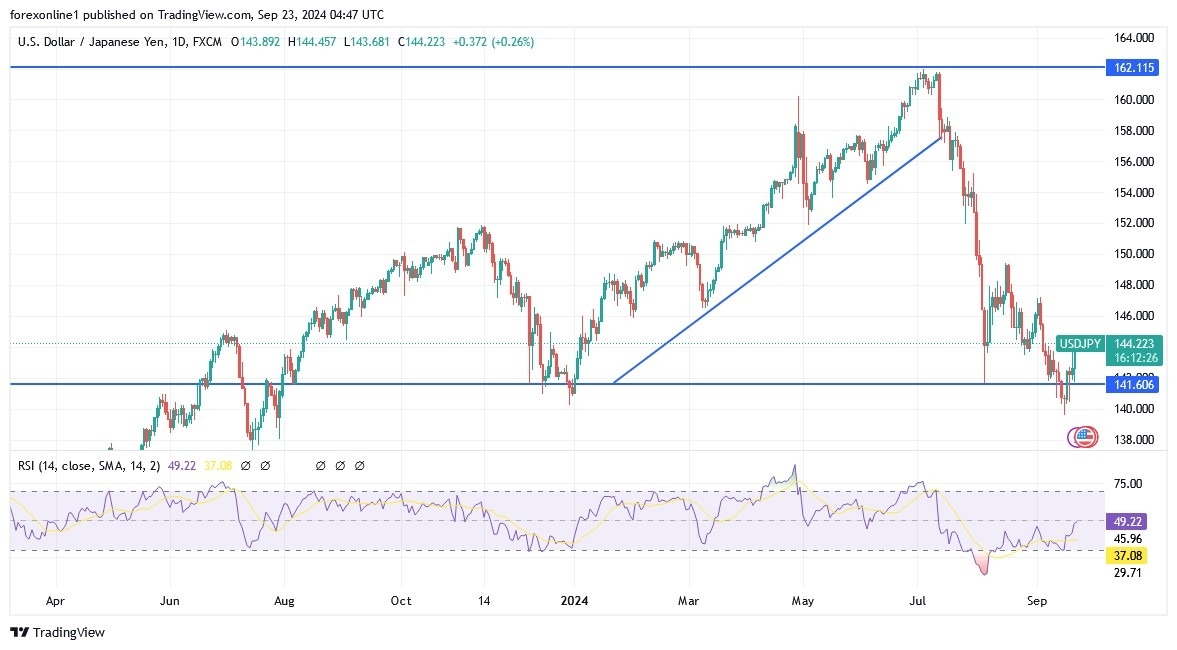- The Japanese yen declined once more to over 144.40 yen against the US dollar on Friday, reversing earlier session gains, after Bank of Japan Governor Kazuo Ueda acknowledged "some weakness" in the economy, a slightly more dovish tone than previous statements.
- However, Ueda maintained his forecast that the Japanese economy is steadily progressing towards a modest recovery, affirming that the central bank "will continue to adjust the degree of easing" if its economic and price forecasts are realized.
These comments came after the Bank of Japan kept its interest rate unchanged at 0.25% in a unanimous vote, in line with expectations. The latest economic data also showed that Japan's core inflation accelerated to 2.8% in August from 2.7% in July, supporting the hawkish outlook for the Bank of Japan's policy. Externally, the yen faced pressure from rising risk assets as the US Federal Reserve's interest rate cut boosted global economic expectations.
Focusing on Japan this week, all eyes will be on the preliminary purchasing managers' indices for September. Also, the minutes of the Bank of Japan's latest policy decision for hints on the timing and size of potential interest rate increases that will remain in this cycle.
On another note, according to stock trading platforms, US stock markets on Wall Street closed the week on a more subdued note, as US stocks hovered near their all-time highs set during a global rally the previous day. The S&P 500 index fell 0.2% from its record high, and the Nasdaq Composite fell 0.4%. Meanwhile, the Dow Jones Industrial Average added 38 points, or 0.1%, to its all-time high. Also, FedEx shares had caused the market to decline by 15.2% after its fourth-quarter earnings and revenue fell short of analysts' expectations. The company said that US customers sent fewer packages through its priority services, while it had to deal with higher Labor wages and other costs. Correspondingly, FedEx lowered its revenue growth forecast for the fiscal year. At the same time, Nike shares helped limit market losses, rising 6.8% after appointing Elliott Hill as its CEO.
Meanwhile, shares of Trump Media & Technology Group fell 7.8% as its largest shareholder, former President Donald Trump, won the freedom to sell his shares if he wanted. Decisively, Trump owns more than half of the $2.7 billion company behind the Truth Social platform. Nevertheless, Trump and other insiders in the company were unable to take advantage of this because a "lock-up agreement" prevented them from selling any of their shares. Before the lock-up period ended, Trump said he was not in a hurry to sell.
TMTG shares have fallen to less than $14 from over $60 in March, and have had a volatile journey there. Over the past six months, the stock has often swung by at least 5% a day, up or down. Similarly, shares of homebuilder Lennar fell 5.3% after presenting a mixed earnings report. Its fourth-quarter earnings exceeded expectations. Also, it said it earned less profit for every $100 of home sales, and expects this margin to remain flat in the current quarter.
Overall, conditions may be ripe for improvement for homebuilders, nevertheless. The US Federal Reserve earlier this week cut its benchmark interest rate for the first time in more than four years, and more are likely to come. Thus, that could make mortgages more expensive for homebuyers. The cut closed the door on a race where the Fed kept its benchmark interest rate at a two-decade high in hopes of slowing the US economy enough to kill high inflation. Now that inflation has come down from its peak two summers ago, Fed Chair Jerome Powell said the Fed can focus more on keeping the job market strong and the economy out of recession.
Generally, the Fed remains under pressure because hiring has slowed under the weight of high interest rates. Meanwhile, some critics say the central bank has waited too long to cut rates and may have hurt the economy. Also, Critics say that the U.S. stock market may be overheating because of the belief that the Fed will succeed in achieving what once seemed impossible: bringing inflation down to 2% without causing a recession.
Top Forex Brokers
USD/JPY Technical Analysis and Expectations Today:
Based on the daily chart attached, the USD/JPY pair is trying to form an ascending channel that reflects the current bearish outlook. For this to succeed, bulls will need to move the pair towards the resistance levels of 147.90 and 150.00, respectively. Conversely, the psychological level of 140.00 will remain the most important to expect a further collapse. The USD/JPY will remain subject to signals from global central bank officials, as well as investors' risk appetite.
Ready to trade our USD/JPY forex forecast? Here are the best forex brokers in Japan to choose from.

